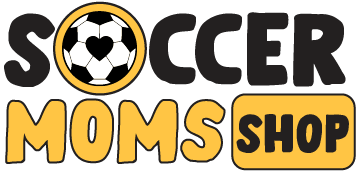Parents Mind Your Language
Biggest mistake I see parents make with their sporty child is talking too muchand using the wrong language when trying to help their child. Every parent has watched their child learn to roll, crawl, stand and walk and encouraged them along the way. They have given the child the opportunity to succeed and an environment where they feel safe to try.
Why, then, when it comes to organized sports, do parents feel the need to micromanage and overcomplicate the process with undue verbiage and convoluted phraseology?
How Parent Think They Are Helping
As a coach of a multi-sports club, I have parent volunteers and parent spectators. The first thing they want to do is help. Their unbridled enthusiasm results in too many instructions to stop the child from making mistakes. The child gets bamboozled with the stream of advice, and their young brain can’t cope, so they stop moving. Sometimes they cry. If this persists, they may drop out of the sport.
Constraints-Led Coaching
Some parents watch me coach and complain that I’m not coaching. I set up a practice or drill as quickly and as safely as possible and then let the children attempt the task. I keep quiet unless I see a safety issue. In modern coaching parlance, this is known as ‘Constraints-led coaching.’ The coach sets a puzzle created by either the environment, the learner’s body, or the task. The child then learns by attempting to solve the puzzle. The only way learning occurs is if the child solves the problem themselves. (Note: If you spoon feed a child, they get good at recognizing spoons.)
Parents will have used this method successfully in the past. Remember when your infant was learning to stand and then walk?
- Put them on a soft mat or carpet, so they didn’t hurt themselves when falling.
- Had low chairs or cushions that allowed the child to pull themselves up.
- Removed sharp-cornered coffee tables and drinks glasses from the room.
- Watched them try, try and try again and offered them words of encouragement and praise, ‘Well done,’ ‘Never mind,’ ‘Keep trying,’ and ‘oops-a-daisy.’
At no point did the parent say, ‘Concentrate,’ ‘Not like that,’ or even worse, ‘If you don’t get it right, you won’t get your diaper changed.’
Apart from the diaper comment, we hear that negative language on the sideline or in the car journey home. In the UK, children have often expressed that they prefer their grandparents to pick them up from matches and training because the conversation might go like this:
‘Hi Gran, we lost 7-0 today.’
‘That’s nice dear, would you like some cake?’
Gran is putting the sport in its proper perspective. Compare that to the dad who breaks down the child’s mistakes, the referee’s eyesight problems, and how the coach should be playing a different form so that their child can shine.
Which Car Journey Would You Prefer?
Parents need to remember their toddlers’ joy as they took their first few steps. How can they recreate that nurturing environment?
One of the best ways is to reduce the use of words like ‘mistake’ and ‘fail.’ (I have deliberately talked about parents’ mistakes in this article: I expect it rankles somewhat. Good, that is how your child feels.)
Apart from very few skills, most sporting activities have different ways of being performed successfully. Even in the few select skills, there are different ways of learning them. (Note: FAIL can is a mnemonic for First Attempt At Learning?)
Exploration And Guided-Discovery Allow Children To Find Their Way
It is frustrating sat as a parent watching, but the child is the learner, not the adult. If the child looks over and you are smiling and reassuring them, they are more likely to have the confidence to continue trying.
An example is catching: Compare these two scenarios:
A: Get the child to run a go-route, and you throw an adult size football at them over 30 yards, in front of their peers.
B: Have children throw and catch different size balls to each other, gradually increasing the distance with each successful catch or decreasing the distance with each drop.
Scenario B has a lot more throwing and catching, is collaborative, and the children can self-organize. After a few minutes of this, some pointers can be given, such as:
- Try holding your hands out towards the passer
- Watch the ball into your hands
Drops are inevitable and necessary to improve. If the child is catching the ball 100% of the time, the challenge is too easy. If they drop 5 in a row, the challenge is too hard.
By tweaking how we play the games and encouraging exploration, experimentation, and challenges, we help them build confidence and try more complex skills ever—language matters.
Source: https://www.stack.com

